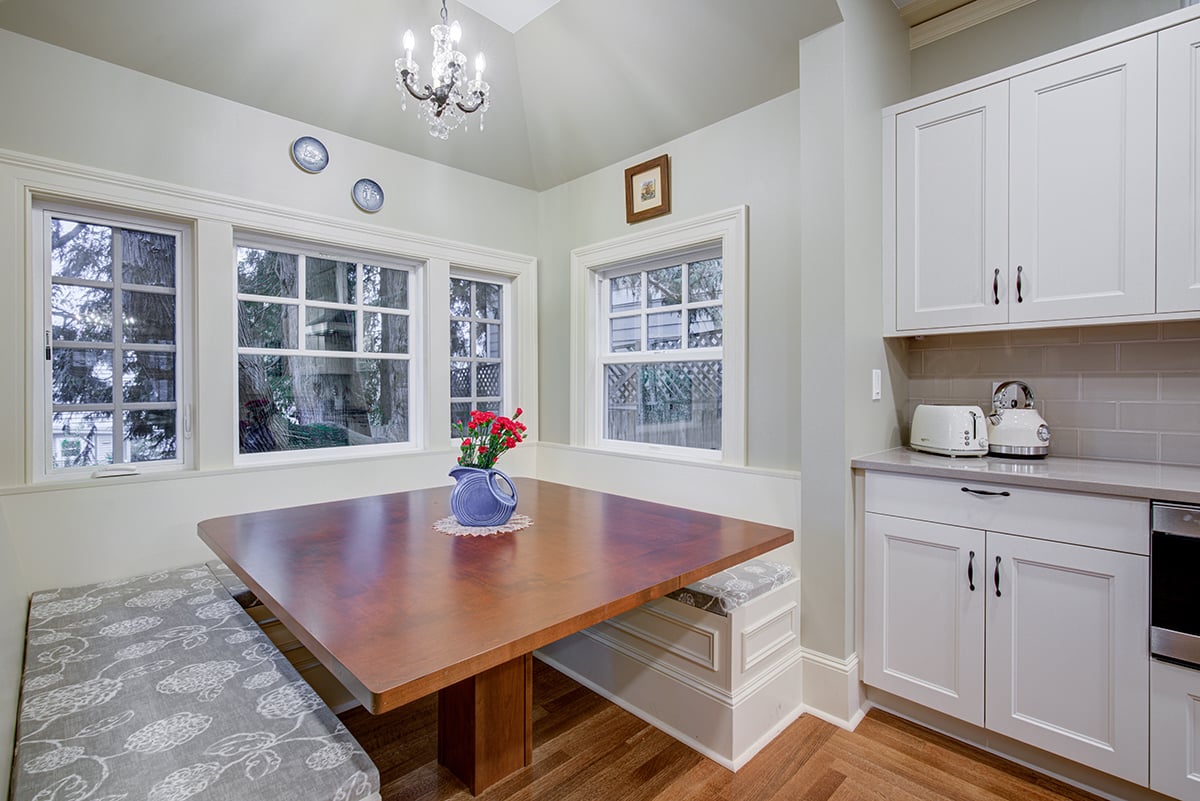In residential design-build projects, financing is a requirement for the preliminary step toward obtaining your dream home. The financing process encompasses various avenues, from engaging with financial institutions and lenders to leveraging personal assets. Understanding the nuances of each financing option is paramount to confidently embarking on your custom home-building journey.
This article explores the various ways homeowners finance new home construction projects, helping you determine which option makes the most sense for you.
Financial Institutions
When homebuyers consider financing through financial institutions, two primary loan options emerge: construction-only loans and Home Equity Loans, also known as Home Equity Lines of Credit (HELOCs).
A home construction loan, secured against the value of the land and the projected worth of the completed project, facilitates funding for the construction process. Requirements for down payments, collateral, loan rates, and general contractor partnerships vary among banks, necessitating a comprehensive understanding of terms and conditions. Each bank will have its own terms for loan application processes, progress payments, monthly payments, loan amounts, and interest rates, as well as closing costs and the types of construction loans it may offer.
In contrast, a HELOC leverages the equity in a homeowner’s existing property to provide the borrower with funding for home construction. Offering flexibility and accessibility, HELOCs typically grant up to 80% of the current market value of your own home.
Partnering with a reputable custom home builder who does the work upfront to outline the cost of building and has established relationships with banks can streamline the financing process, ensuring seamless transactions and efficient payouts. Working with any type of lender, the approval process can be lengthy. Try to complete this work in advance to ensure pre-approval before starting any project work.
.jpg?width=1600&height=1067&name=willett-house-custom-build%20(32).jpg) Utilizing Portfolio for Financing
Utilizing Portfolio for Financing
Strategic planning is imperative for individuals considering leveraging their investment portfolios to finance their custom home. Given the extended duration of new home construction projects, ranging from 12 to 18 months, the timing of fund withdrawal becomes critical. Consultation with both a seasoned design-build contractor and a financial planner is essential to align progress billings with financial objectives and mitigate potential tax implications.
Attempting to time the market or speculate on future earnings and disbursements poses inherent risks and can jeopardize the project's viability. By prioritizing the security of funds and adopting a proactive approach to financial management, individuals can safeguard their investments and ensure the seamless execution of their construction plans.
.jpg?width=1600&height=1067&name=willett-house-custom-build%20(26).jpg) Savings Account or Alternative Funds
Savings Account or Alternative Funds
Utilizing personal finances or alternative funding sources presents another avenue for financing new construction. Collaborating with a reputable design-build firm facilitates the establishment of a realistic budget tailored to individual needs and financial constraints. Moreover, integrating contingencies for potential cost fluctuations ensures financial resilience throughout the construction process.
For individuals exploring family trusts as a funding mechanism, a comprehensive understanding of distribution requirements and fund accessibility is paramount. Partnering with a design-build team well-versed in navigating complex funding structures enhances transparency and expedites the funding acquisition process.
.jpg?width=1600&height=1067&name=willett-house-custom-build%20(43).jpg) Set Yourself Up for Success
Set Yourself Up for Success
Embarking on the journey of constructing your dream home requires meticulous planning and informed decision-making, particularly when it comes to financing options. Whether navigating financial institutions for conventional loans, leveraging investment portfolios, or tapping into personal savings, proactive collaboration with experienced professionals is indispensable. Approaching this process from an informed stance is especially imperative if you are a first-time borrower.
By cultivating realistic expectations and embracing the guidance of trusted advisors, individuals can confidently navigate the complexities of financing and embark on their custom home-building endeavors, empowered by financial foresight and strategic planning. As the foundational step in the construction process, securing funding lays the groundwork for a seamless and fulfilling journey toward homeownership.
For more information on the custom home building journey, download our eBook, “How to Find the Perfect Custom Home Builder: A Guide to Creating Your Dream Home.”




.png)
.jpeg)









